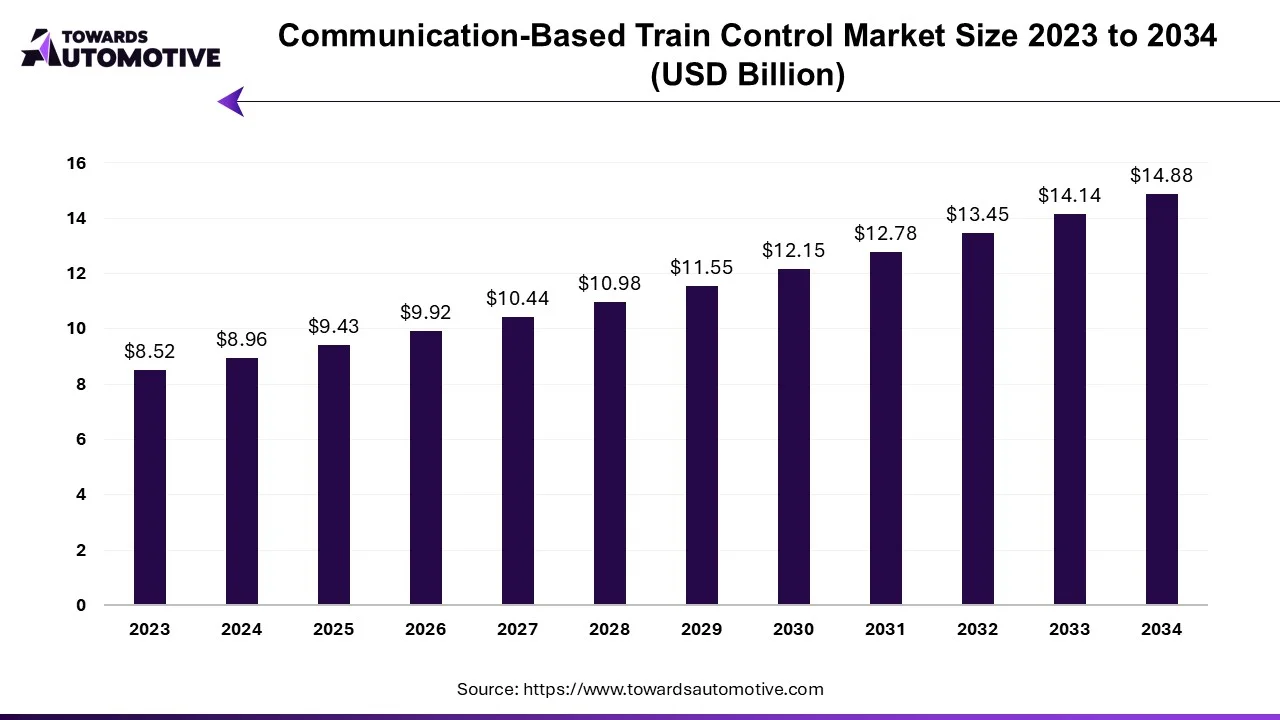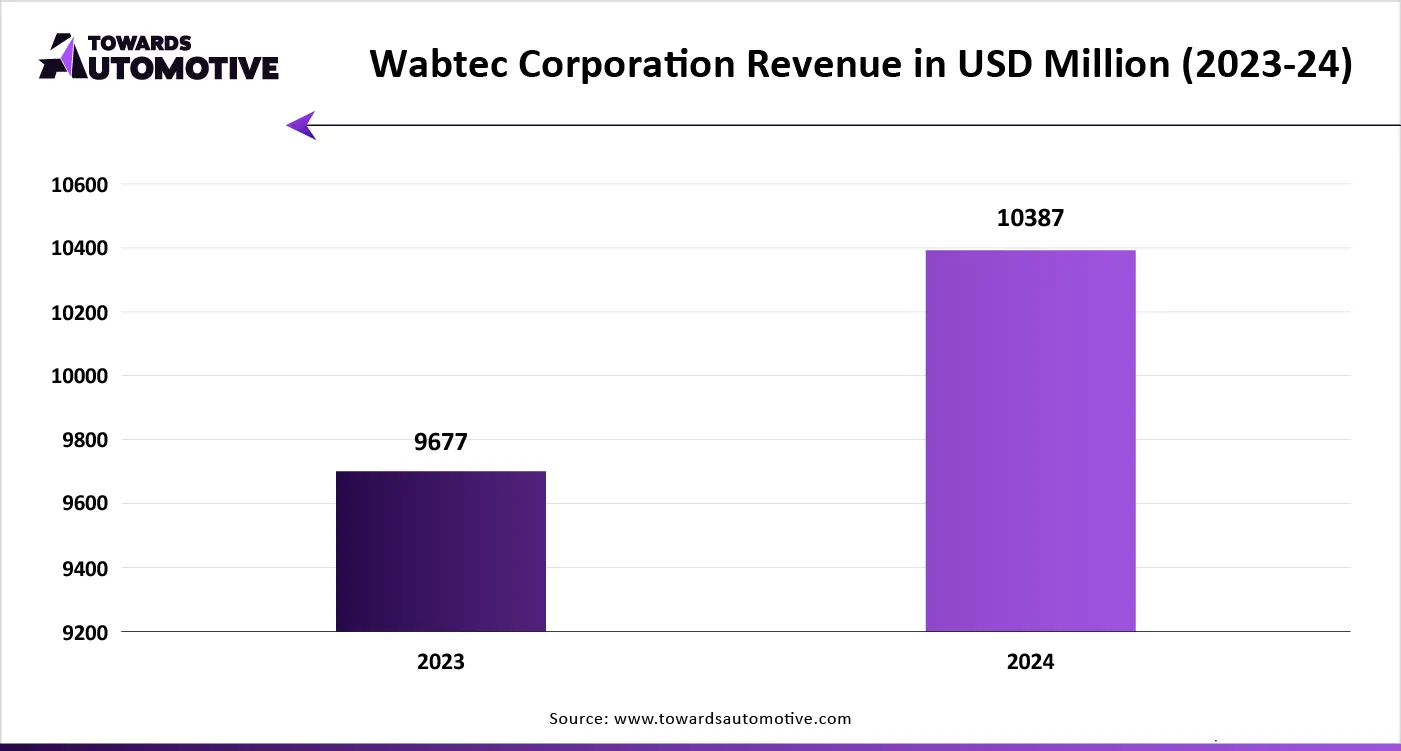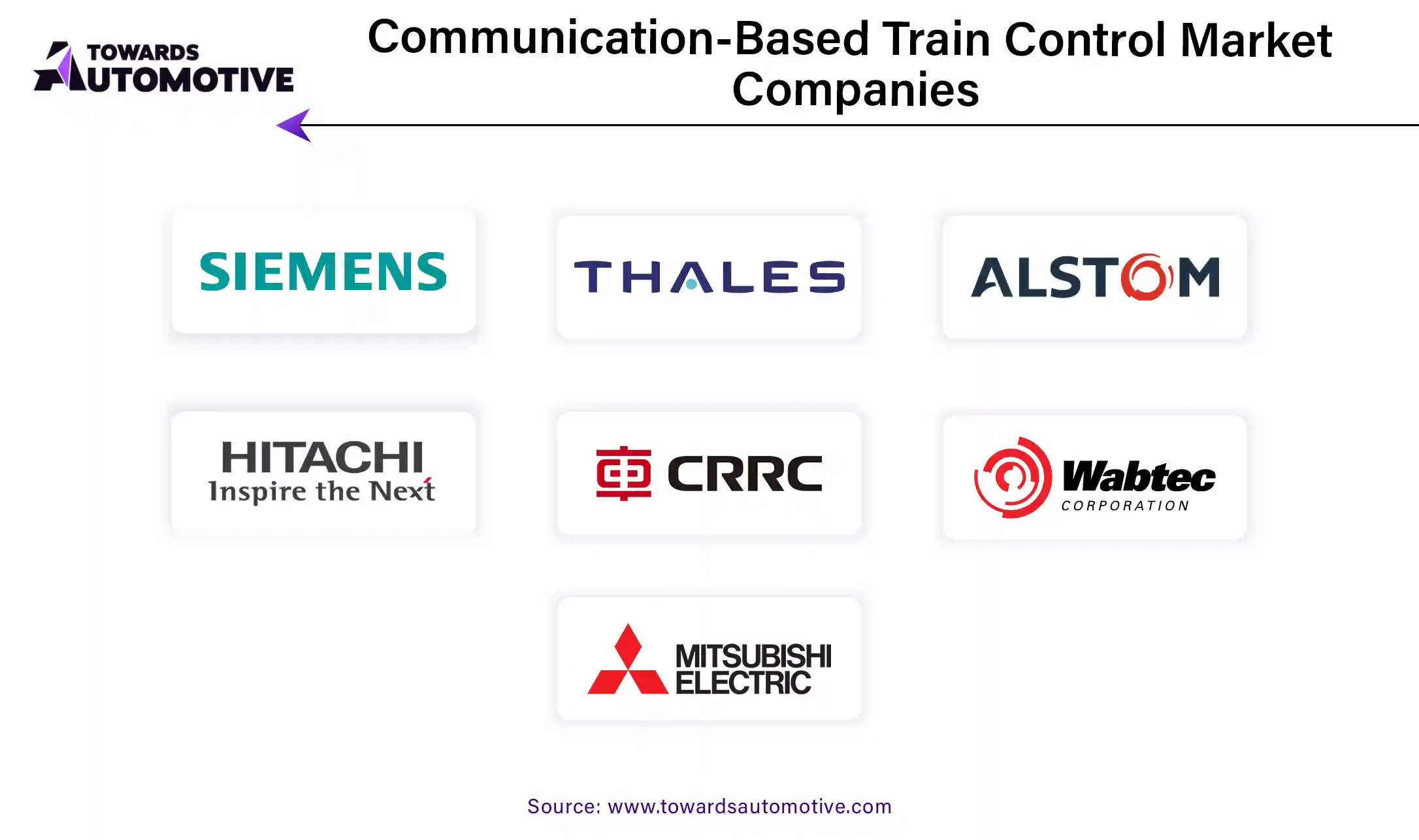March 2025
The communication-based train control market is forecast to grow from USD 9.43 billion in 2025 to USD 14.88 billion by 2034, driven by a CAGR of 5.20% from 2025 to 2034. The growing investment by government of several countries for strengthening the railway infrastructure coupled with rapid urbanization in developed nations is playing a vital role in shaping the industrial expansion.
Additionally, rapid investment by market players for developing advanced control systems for the railway sector as well as increasing emphasis on enhancing railway safety has contributed to the market growth. The integration of advanced technologies such as AI and Bigdata Analytics in train control solutions is expected to create ample growth opportunities for the market players in the upcoming days.

Unlock Infinite Advantages: Subscribe to Annual Membership
The communication-based train control market is a crucial branch of the railway industry. This industry deals in manufacturing and distribution of communication-based train control system in different parts of the world. There are various types of train control systems developed in this sector comprising of basic CBTC and I-CBTC. These systems are designed for operating different types of trains including metro, monorail, commuter rail, and freight rail system. It is available in numerous grades consisting of GoA1, GoA2, GoA3 and GoA4. The growing demand for efficient transportation system has contributed to the overall industrial expansion. This market is expected to rise significantly with the growth of the software industry around the globe.
| Metric | Details |
| Market Size in 2025 | USD 9.43 Billion |
| Projected Market Size in 2034 | USD 14.88 Billion |
| CAGR (2025 - 2034) | 5.20% |
| Leading Region | North America |
| Market Segmentation | By Train Type, By System Type, By Grade and By Region |
| Top Key Players | Alstom (France), Thales Group (France), Wabtec Corporation (U.S.), Mitsubishi Electric (Japan), ABB (Sweden), Argenia Railway Technologies Inc. (Canada) |
The major trends in this market consists of government initiatives, partnerships and rapid urbanization.
Government of several countries are investing heavily for integrating advanced control systems in the railway sector.
Several market players are partnering with metro operators to deploy wireless control system for enhancing the metro operations.
The urbanization in different parts of the world has increased the demand for high-quality railways to optimize public transportation.
The metro segment dominated the market. The growing adoption of metro rail in densely populated areas to enhance public commute has boosted the market growth. Additionally, rapid investment by government of several countries such as India, Singapore, the U.S. and Canada for developing the metro infrastructure is playing a vital role in shaping the industrial landscape. Moreover, integration of technologically advanced communication control system to enhance safety in metro rails is expected to propel the growth of the communication-based train control market.
The commuter rail segment is expected to rise with a significant CAGR during the forecast period. The growing demand for local passenger trains in mid-income countries such as India, Vietnam, Indonesia and some others has driven the market expansion. Additionally, rapid investment by government of several countries to deploy advanced control systems in commuter rail is contributing to the overall industrial growth. Moreover, partnerships among railway operators and market players to integrate advanced control systems in local trains is expected to boost the growth of the communication-based train control market.
The I-CBTC segment held the largest share of the market. The rising use of indigenous communication-based train control system in metro sector has boosted the market growth. Additionally, technological advancements in I-CBTC systems that finds application in optimizing train operations is playing a vital role in shaping the industrial landscape. Moreover, numerous advantages of these control systems including reduce headways, overspeed protection, real-time monitoring, support for unmanned operations and some others is expected to drive the growth of the communication-based train control market.
The basic CBTC segment is expected to grow with a considerable CAGR during the forecast period. The growing adoption of communications-based train control system to manage railway traffic by accurately determining train positions has boosted the market expansion. Also, numerous government initiatives aimed at enhancing safety in the railway sector coupled with rapid focus on modernizing public transportation is further adding to the industrial growth. Moreover, constant research and development activities related to CBTC systems is expected to boost the growth of the communication-based train control market.
North America led the communication-based train control market. The growing adoption of advanced control systems in the railway sector has boosted the market expansion. Additionally, rapid urbanization in several countries such as the U.S. and Canada coupled with numerous government initiatives aimed at developing the railway infrastructure is playing a vital role in shaping the industrial landscape. Moreover, the presence of several market players such as Wabtec Corporation, Belden Inc, Cisco Systems and some others is expected to propel the growth of the communication-based train control market in this region.
Asia Pacific is expected to rise with the fastest CAGR during the forecast period. The rising development in the railway sector in several countries such as India, China, South Korea, Japan and some others has driven the market growth. Additionally, rapid investment by government for strengthening the railway sector coupled with increasing adoption of metro trains for daily commutes is playing a positive role in shaping the industry. Moreover, the presence of numerous communication-based train control brands such as Hitachi Rail Limited, Huawei Technologies Co Ltd, Mitsubishi Electric and some others is expected to drive the growth of the communication-based train control market in this region.
The communication-based train control market is a rapidly developing industry with the presence of several dominating players. Some of the prominent companies in this industry consists of Alstom (France), Thales Group (France), Hitachi (Japan), Siemens Mobility, Inc (Germany), Wabtec Corporation (U.S.), Mitsubishi Electric (Japan), ABB (Sweden), Argenia Railway Technologies Inc. (Canada), Toshiba (Japan), WAGO Corporation (U.S.) and some others. These companies are constantly engaged in developing advanced communication systems for controlling trains and adopting numerous strategies such as business expansions, acquisitions, launches, partnerships, joint ventures, collaborations and some others to maintain their dominance in this industry.


By Train Type
By System Type
By Grade
By Region
March 2025
March 2025
February 2025
February 2025
We offer automotive expertise for market projections and customizable research, adaptable to diverse strategic approaches.
Contact Us